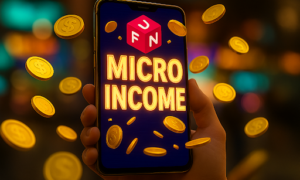Gamification is a proven means to increase user experience and engagement with a mobile app. Game dynamics work for all types of mobile applications and helps to pursue diverse goals the owners might pursue, be it app monetization, education or employee engagement.
Let’s have a closer look at the reasons to use gamification in mobile app development, methods to add game dynamics to an app, and some excellent examples of gamified apps from diverse industries.
Why You Should Gamify Your Mobile App
With more and more apps entering the market each day and the ever-diminishing attention span, engaging and retaining users becomes quite a challenge. At the same time, mobile games tend to succeed with these tasks best: according to the Statista report, games maintain indisputable leadership among other App Store categories.
Thus, creative mobile app developers once borrowed game elements to use them in a non-game app. The eventual results proved so outstanding that most developers now consider the need to add the elements of gamification in their own app. Here are the common benefits that app gamification can bring:
- User Engagement: Gamification fosters competition and curiosity, which makes users set one’s goals and feel the urge to engage with an app.
- Retention: Turning an interaction with an app into a fun and rewarding experience is sure to improve user retention. What’s more, the earned status and rewards make users unwilling to uninstall an app and, thus, have to start anew is they want to return to it later.
- Monetization: Gamification helps in the monetization of an app. It is incredible how much people are ready to pay or how much ads they are eager to watch to get additional opportunities to compete and to customize their digital identity.
- Reviews: Gamification in mobile apps fosters sharing information about it in the social media and writing reviews, which translates into more buzz around your mobile app and better user attraction.
The beauty of gamification is that you do not have to develop a new app to leverage the elements of gamification. In essence, your mobile app development company can expand the existing solution with the elements of a game when the app is already up and running. Or, you can add in-app gamification for the period of the marketing campaign linked to it.
Effective Elements of Gamification
There are 5 major elements of gamification that can transform user experience with your app. These are:
1) Rewards
A reward is at the core of positive reinforcement – the type of operant conditioning that is the most effective for achieving the desired behavior. The simple rule says – if people are rewarded for what they do, they wish to repeat the same action again and again. If you reward the time in an app, the purchase, or the high score in a test – users are more inclined to use an app, buy, and learn. Thus, be sure you reward the desired behavior.
2) Virtual goods
Virtual goods are points or in-app currency that users can either collect towards a physical reward or exchange for additional features. For example, the earned points may give access to extra lives, exclusive courses, extra chances to take a quiz, the ability to add a custom background, whatever. Virtual goods work great as a part of loyalty programs too. In this case, users can redeem virtual currency when they reach a specific threshold.
3) Badges
Our world has a great emphasis on the status people hold. Just note how much we love introducing and defining people by their greatest achievements. In-app badges act as official signs of recognition and make your users feel that someone else is aware of and appreciates their progress or involvement.
4) Competition
Competition is another element of app gamification that introduces thrill and excitement into user activity. A user may compete against specific users (for example, training and learning apps allow users to challenge their friends and colleagues) or against all other users of an app. Here, it is important to have a screen with a leaderboard that would inspire users to get into the Top 5/10/15 list and remind them of the achievements and the way to go.
5) Progress displays
While competition is directed as challenging someone else, progress displays are meant to make people challenge themselves and try to be more productive towards their goals. The visual presentation of the remaining effort before one can enjoy the reward – 2 tasks to complete, 1000 steps to make, or 1 training quiz to pass – is an excellent way to motivate users. As well as a justifiable reason to send a push notification and remind users of using an app.
Mobile App Gamification: Examples to Learn From
Examples from diverse industries set a great benchmark for best practices of mobile app gamification. Here are some app from various industries to learn from:
- Learning: Duolingo is a well-known language learning app that uses a bunch of gamification techniques to increase user engagement. In particular, it has an internal currency – lingots – and uses point-based rewards. A scoreboard and the ability to vote on the best translation introduce competition in an app. In addition, users can earn a badge for developing specific skills, spending a certain number of lingots, or some other actions.
- Productivity: Todoist is a great example of mobile app gamification, as the very concept of “karma,” which it uses to award or distract points sounds rather original and fun. The karma points act as digital goods that can further be shared in social media and used to unlock the next levels. Forest is another productivity app that works magic thanks to the compelling gamification idea it uses – once you start working on a task, you plant a seed that can grow into a mighty tree; distraction and leaving an app before the task is done makes the tree die.
- Staff Training: Samsung has successfully used a gamified app for training its floor salesmen in newly launched products. The Samsung Floor Salesman Hero app increased employee experience by using game elements such as an award, digital goods, and a competition. What’s more, the enterprise app even had a small game in it – users could exchange the points they earned for giving the right answers for the chance to spin the slot machine.
- Health and Fitness: Most fitness trackers point to your progress towards the goal and congratulate you on reaching a milestone. Healthcare apps follow the lead. For example, Mango Health, an app that reminds users to take pills, gives rewards for medication adherence, exchanges in-app currency for real-life rewards, and tells how users’ performance compares against that of patients with similar conditions.
Final Thoughts
Although the focus has been on how gamification helps app owners to achieve their goals, such as engagement, monetization and retention of users, note that it also helps users achieve their goals in a fun and entertaining way. Thus, if you have a higher mission behind your app like helping people from diverse backgrounds learn a new language or encourage more people to stay fit, the use of the elements of a game will make you better equipped to accomplish it.



































